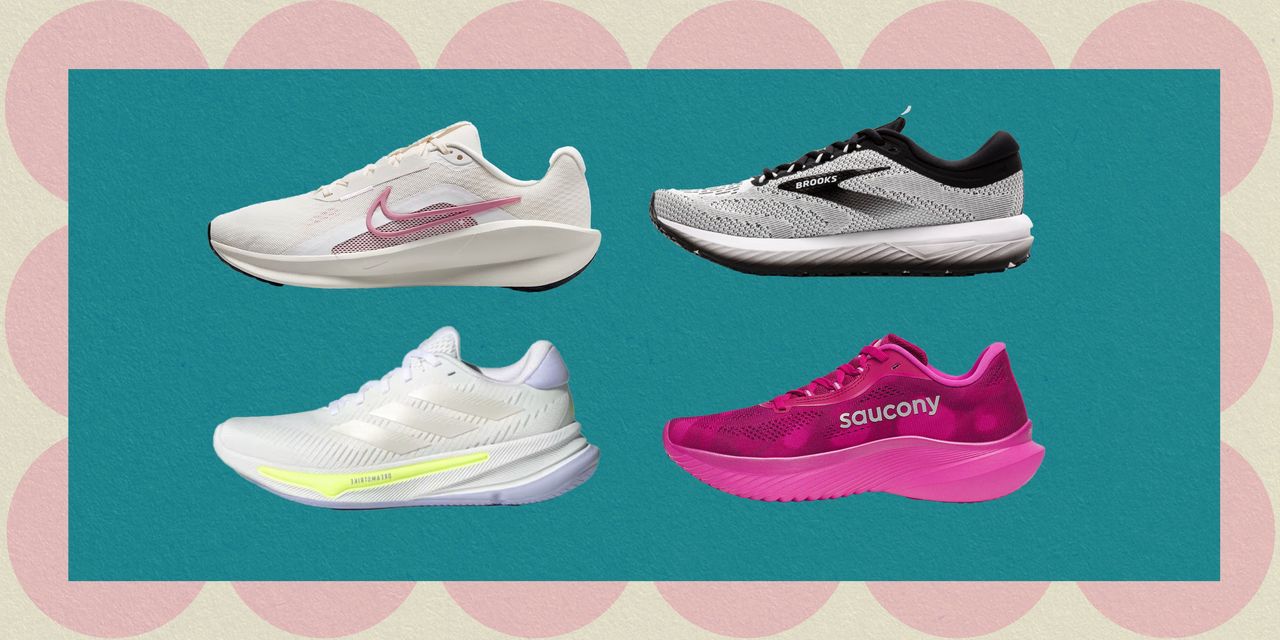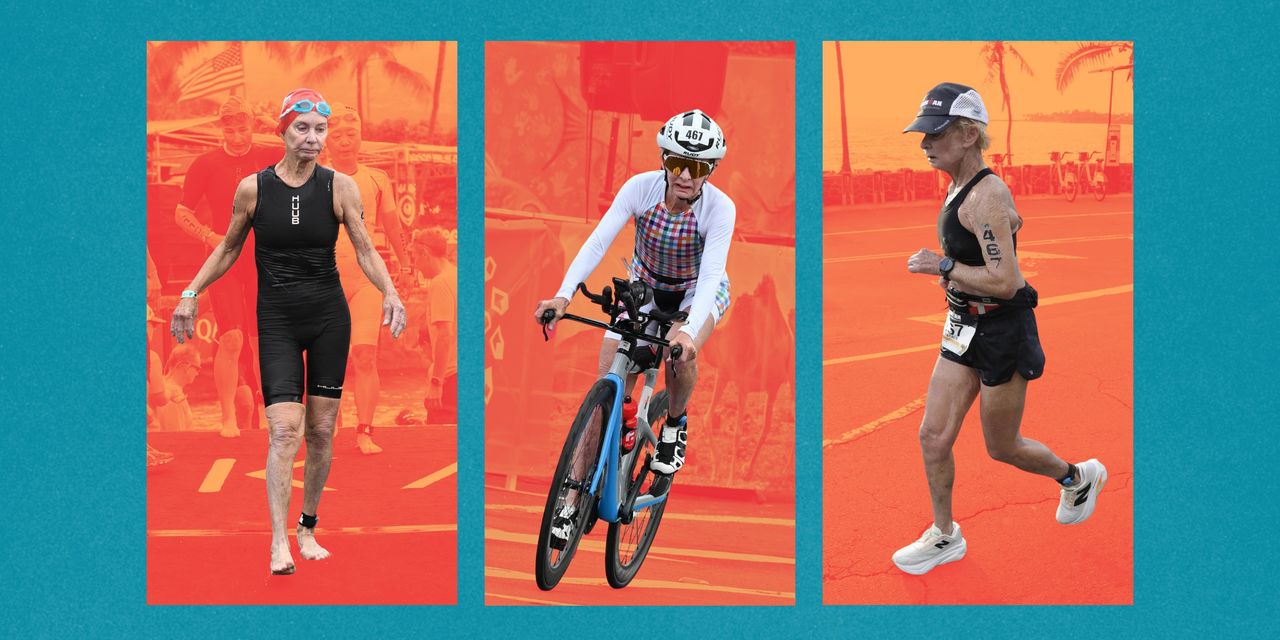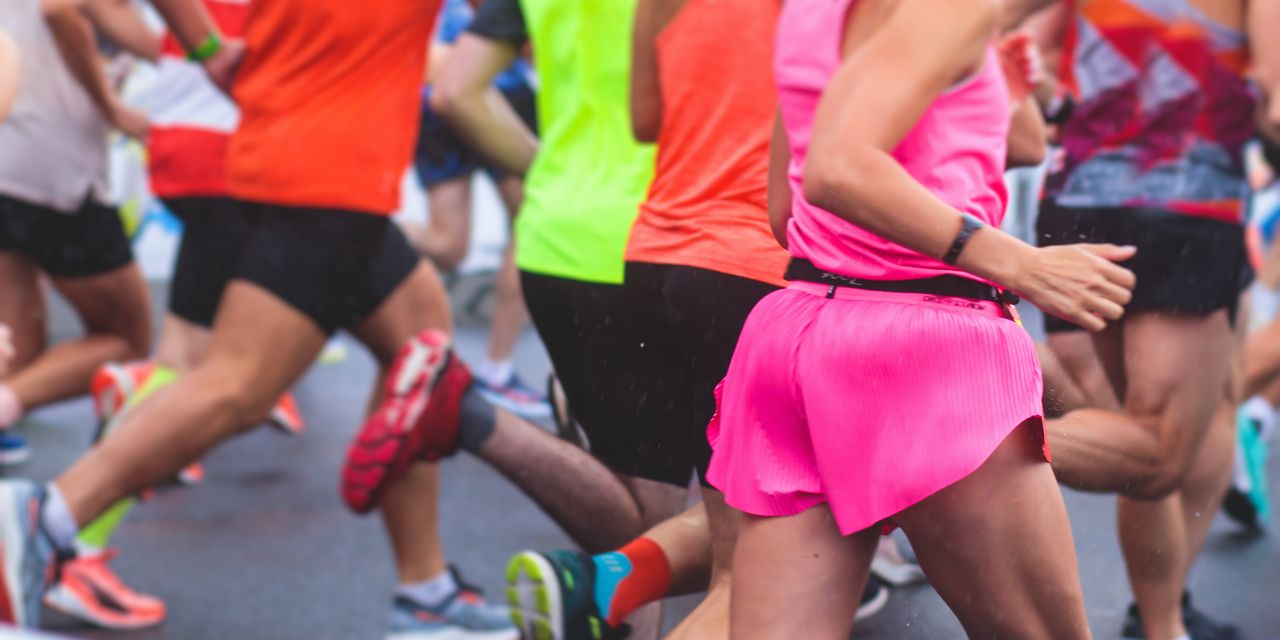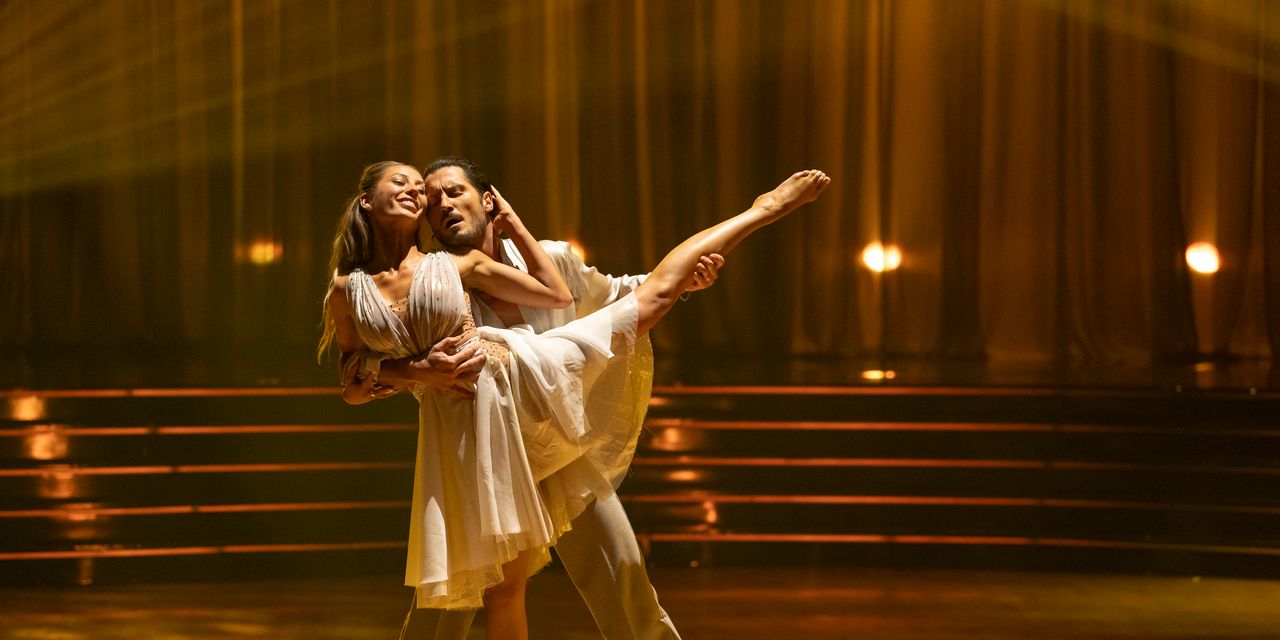You Don’t Have to Spend a Fortune to Find the Perfect Running Shoe

Feel like running shoes get more high-tech every year? You’re not wrong. “There’s a lot of research and development that goes into the running shoe,” running coach Amie Dworecki tells SELF. Cutting-edge materials and designs can lead to expensive price tags. But that doesn’t mean you can’t find a good deal: The best affordable running shoes are still out there.
One strategy is to buy older models, which brands typically put on sale whenever they release an updated version. Last year, RunRepeat, a site that collects running stats, found that 56% of all running shoes are available at a 30% to 69% discount online.
You can also hunt for running shoes that are cheaper to begin with. Many brands sell less expensive versions of their popular models with materials that are just a little less advanced, Mark Mendeszoon, DPM, a podiatrist who owns a specialty running shop, tells SELF. And if you’re a casual runner who just heads out for one or two low-key runs each week, “I don’t think you’re going to notice much of a difference,” he says.
Sound like you? We’ve got your back: SELF tracked down budget-friendly running shoes that’ll help you get some miles in without hurting your wallet. Shop our recs below.
Our top picks
- Best Overall: New Balance FuelCell Propel v5,
$120$98 - Best for Beginners: Adidas Supernova Ease,
$100$90 - Most Breathable: Nike Interact Run, $116
- Best for Marathons: New Balance Fresh Foam 680v8,
$80$65 - Best for the Treadmill: Nike Downshifter 13, $78
- Best for Track Running: Saucony Kinvara 15, $120
- Best for Trail Running: Asics Gel-Venture 10,
$80$65 - Most Versatile: Reebok Floatride Energy 6, $92
- Best Stability Shoes: Asics GT-1000 13,
$110$100 - Best for Cross-Training: Brooks Revel 7, $100
Shop the best budget-friendly running shoes
Check out these pairs that runners and coaches love.
Best Overall: New Balance FuelCell Propel v5
New Balance
FuelCell Propel v5
The FuelCell Propel v5 outperforms its price point. Made with soft FuelCell foam and a peppy thermoplastic polyurethane (TPU) plate in the midsole, you can get a surprisingly fun, springy ride out of this budget-friendly shoe. Runners wear them for everything from easy runs to faster workouts and even races.
“I’ve had the last four or five models, and they’re consistently great, with only positive changes,” Kali Otis, a marathon runner in Massachusetts, tells SELF. The Propels are her go-to choice for easy and recovery runs, when comfort is key. “I love that they’re always supportive for running, but also stylish enough to wear casually,” she says. (Post-run brunch, anyone?)
Sizes: 5 to 13 | Material: Synthetic upper, TPU, foam | Widths: Standard, wide | Weight: 7.8 oz
Best for Beginners: Adidas Supernova Ease
These shoes are a pared-down version of Adidas’ super-comfy (and SELF editor-approved) Supernova Rise. The main difference is that the Ease has Dreamstrike cushioning, instead of the Rise’s smoother, bouncier Dreamstrike+. Still, reviewers consistently rave about how comfortable the Supernova Ease feels.
In addition to the soft foam midsole, you also get plenty of padding around the ankle to keep your foot cradled in place (without causing unnecessary blisters). Adidas recommends this shoe for everyday runs up to 12 miles—perfect for beginners who don’t want to shell out extra cash just for some spring in their step.
Sizes: 5 to 12 | Material: Rubber, mesh, foam | Widths: Standard | Weight: 7.8 oz
Most Breathable: Nike Interact Run
The Interact is Nike’s first running shoe that has the brand’s comfy, airy Flyknit upper on a shoe under $100. This woven upper feels more like wearing a supportive sock on the top and sides of your foot—it’s not so stiff that you’ll get blisters or hotspots. It even has more breathable zones right over the toe box, where your feet are most likely to get hot and sweaty. There are also extra overlays around the edges to help make sure a toe doesn’t pop through the fabric (though some reviewers say the knit can still tear with heavy wear).
Meanwhile, under your foot, the midsole features a thick stack of Nike’s Bio IP foam, known to be the company’s softest cushion. So, no matter how hot it gets out, you can still count on an easy, breezy ride.
Sizes: 5 to 12 | Material: Knit fabric, foam, rubber | Widths: Standard | Weight: 7.4 oz
Best for Marathons: New Balance Fresh Foam 680v8
New Balance
Fresh Foam 680v8
You’ll often see some fancy shoes at the starting line of a marathon. Serious runners going for a new personal record will often opt for a fancier carbon-plated “super shoe” that could cost $300 or more, Dworecki says. But if you’re just trying to enjoy your 26.2-mile journey to the finish line, she says you could absolutely wear more budget-friendly running shoes—though she does suggest sticking with a reputable brand, like New Balance. (A marathon is not the time to test your luck with an unknown manufacturer.)
One smart option: The Fresh Foam 680s, a more affordable take on New Balance’s best-selling Fresh Foam X 1080s. It’s slightly less cushioned, but still plenty spongy (for less than half the price). Just know that many reviewers say they’ve had to size up to get a roomy enough fit—which you’ll need on race day, so your feet have plenty of space to swell as the miles add up.
Sizes: 5 to 12 | Material: Foam, knit fabric, polyester, mesh, rubber | Widths: Standard, wide | Weight: 7.7 oz
Best for the Treadmill: Nike Downshifter 13
This shoe is based on the design of one of Nike’s most popular running shoes: the Pegasus. “The Pegasus has been around for a really long time,” Dworecki says, adding that she ran her first marathon in the Pegasus. “The Downshifter is built on the Pegasus, just made to be more affordable.” As a result, the Downshifter is plenty padded and comfortable. “You get pretty good performance for the price,” she says.
If you’re a Pegasus fan watching your budget, a smart strategy would be to lace up the Downshifters for your indoor runs. Treadmills generally offer more shock absorption than you’d get on pavement (or even a track). That means you can more get away with less advanced cushioning in your shoes. Save your Pegs for the miles when you really need them—on hard concrete.
Sizes: 5 to 12 | Material: Mesh, synthetic fabric, rubber | Widths: Standard, extra wide | Weight: 8.5 oz
Best for Track Running: Saucony Kinvara 15
Many budget-friendly running shoes are designed for easy, everyday runs. But this pair from Saucony is specifically made for picking up the pace. The PWRRUN foam in the midsole offers tons of shock absorption, but also has a good deal of what running shoe nerds call “energy return” (a.k.a. bounciness). That comes in handy when you head to the track to rock a speedy interval workout.
Just know that this shoe has a lower heel-to-toe drop—the heel only sits four millimeters higher than the toes. While some runners will love the more natural feel, it can put a little extra stress on your Achilles or calves. If you’re prone to issues in those areas, give yourself plenty of time to slowly break in this shoe and let your legs get used to them by running just a mile or two in them at a time first.
Sizes: 5 to 12 | Material: Mesh, foam, synthetic rubber | Widths: Standard, wide | Weight: 6.2 oz
Best for Trail Running: Asics Gel-Venture 10
SELF previously highlighted the Gel-Ventures as some of the most breathable shoes—Dworecki also recommends them for that reason. But she also says that the cushioning—which uses a tech that Asics calls “Amplifoam”—offers great shock absorption.
Even better: The lugs on the outsole are designed to seamlessly take you from city roads to dirt trails. Although they might not have quite enough traction to take on the gnarliest single track, the extra grip can help you keep your footing secure on more laidback trails. Like most trail shoes, however, the sole can feel stiff when you’re just walking around town (since they’re meant to protect your feet from roots and rocks).
Sizes: 5 to 12 | Material: Polyester, foam, gel, synthetic rubber | Widths: Standard, wide | Weight: 10.6 oz
Most Versatile: Reebok Floatride Energy 6
For a budget-friendly running shoe that can truly do a little bit of everything, Reebok’s Floatride Energy is a great choice. The rubber outsole is grippy enough to hit the trails, but still flexible enough for strolling through the city. Floatride Energy foam in the midsole offers ample shock absorption for high-impact runs—without such a huge stack of cushioning that you feel too unstable.
Plus, the sporty style is cute enough to pull off with a pair of jeans after your run. It might not be the speediest or cushiest shoe on the block, but it can hold its own as a one-and-done gym bag staple.
Sizes: 5 to 12 | Material: Fabric, foam, rubber | Widths: Standard | Weight: N/A
Best Stability Shoes: Asics GT-1000 13
Stability shoes—made to help runners whose arches collapse inwards when they step (a.k.a. overpronators)—are typically more expensive than neutral trainers. That’s because they have extra tech that guides your foot into the right alignment, which comes at a higher cost. One of the few less expensive options is Asics’s GT-1000. It won’t give you major motion control, but it will provide your feet with some mild correction that could help slight overpronators avoid injury.
Bonus: It also has an infusion of Asics’s PureGel tech in the heel. Runners who heel strike will appreciate how this offers a softer, more joint-friendly landing.
Sizes: 5 to 12 | Material: Mesh, synthetic fabric, foam, gel, rubber | Widths: Standard, wide | Weight: 8.3 oz
Best for Cross-Training: Brooks Revel 7
Looking into a running shoe for cross-training? You’ll want something that’s cushioned enough for smooth, comfortable strides, but also stable enough for when you’re planning to pick up some weights—and comfy enough to keep your feet happy through it all. This pair of Brooks is designed with just the right amount of springy foam to support you on the run. But it’ll also perform well during strength-training workouts.
Sizes: 5 to 12 | Material: Knit fabric, foam | Widths: Standard | Weight: 8 oz
What to look for when shopping for budget-friendly running shoes
It doesn’t matter how much your shoes cost—there are a few things you never want to compromise on.
A good-fitting pair of running shoes will feel comfortable right out of the box—but will be a little bigger than your day-to-day sneaks (since your feet can swell on a run, points out running coach Nikkia Young). You should have at least a thumbnail’s worth of space between your big toe and the front of the shoe, and be able to wiggle it up and down without any pressure on the tops or sides of your toes or feet. Also check to make sure your heel doesn’t pop out of the back when you step, so you don’t end up with blisters, Dr. Mendeszoon adds.
Been a while since you bought new shoes? It’s a good time to measure your feet—Dr. Mendeszoon recommends doing it once a year. “As we all get older and abuse our feet, they change in shape,” he says (which could mean your size has changed).
Cushioning and arch support
The amount of cushioning to look for in a shoe mostly comes down to personal preference. Some runners like a pillowy ride while others prefer a more secure, closer-to-the-ground feel.
Arch support, however, is based on how much extra stability you need. If you’ve got an arch that doesn’t overpronate (collapse in) when you step, you can stick with a neutral running shoe, Dr. Mendeszoon says. But if you have a flatter foot that overpronates, a stability shoe will have a thicker midsole under the arch to help hold it in place. A motion control shoe will correct your gait even more.
Not sure what’s going on with your arches? Visit a specialty running store—the pros there can analyze your gait and help you pick the perfect shoe.
Look for a breathable upper (no canvas or leather). “You also want to make sure that the shoe is lined around where you put your foot in, especially around the Achilles,” Dr. Mendeszoon says. Without enough foam padding around the ankles and heel, you could end up with painful rubbing and irritation (particularly if you start putting in more mileage).
When it comes to the midsole, most sneaks have gel, foam, or both. One isn’t necessarily better than the other—it comes down to personal preference. But how you strike the ground (forefoot, midfoot, or heel first) may determine where you need a little extra padding for the comfiest run.
How we chose the best budget-friendly running shoes
SELF staffers and contributors test more than a hundred shoes every year for various stories and our annual Sneaker Awards. So we’ve got tons of experience spotting the difference between a running shoe that’s kinda meh and one that’s truly great.
To find the best budget-friendly running shoes, we drew on expertise from podiatrists and running coaches. We gathered their insights on how to find a shoe that truly gives you high value for a low price point. Then, we polled runners and scoured online reviews to learn which models actually stand up to daily wear. Only the pairs with reliable reputations for comfort and durability made our list.
Frequently asked questions about budget-friendly running shoes
How much should a good pair of running shoes cost?
A good pair of running shoes typically costs $130 or $140, according to Dr. Mendeszoon. But it’s entirely possible to find high-quality running shoes for less. When a brand puts out a new version of a particular model, the old one usually goes on sale. If you’re not looking for the most advanced, durable materials, you could also go with a brand’s cheaper line of running shoes.
Do expensive running shoes make a difference?
Expensive running shoes typically have more advanced materials in the midsole to better absorb shock, provide a cushioned ride, and propel you forward with each step. This can be helpful for dedicated runners who want to put in serious mileage. “If you’re going to get lesser-quality shoes, just make sure that you’re not doing 50 miles a week in them and keeping them for a year because injuries will happen,” Mendeszoon says.
Related:
- The Best New Balance Shoes That Runners and Podiatrists Keep Recommending
- How to Tell Which Brooks Running Shoe Is Right for You, According to Podiatrists
- Podiatrists Share Their Favorite Hoka Shoes
Get more of SELF’s great product recommendations delivered right to your inbox (for free!).





